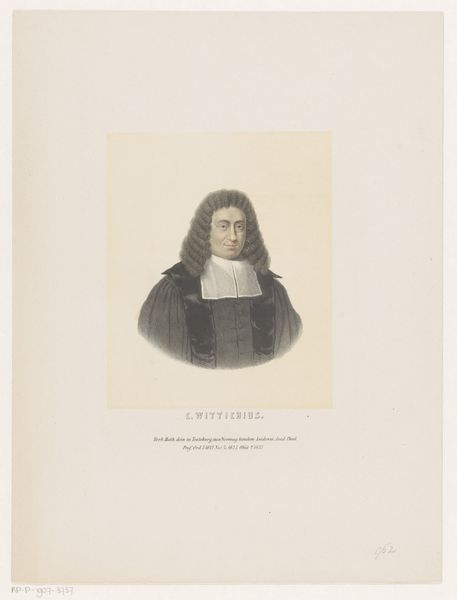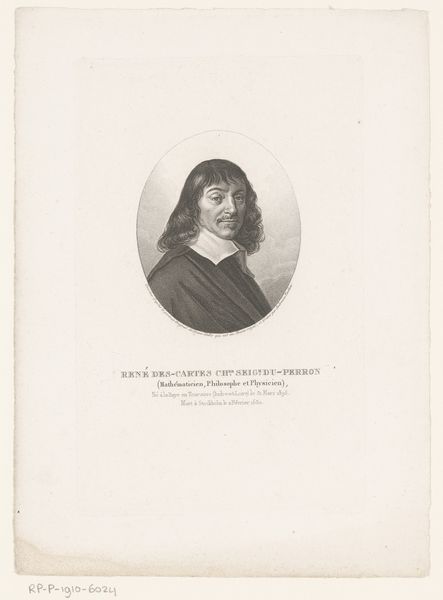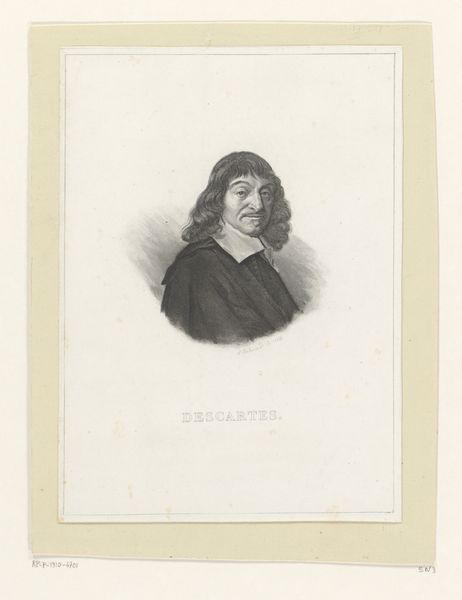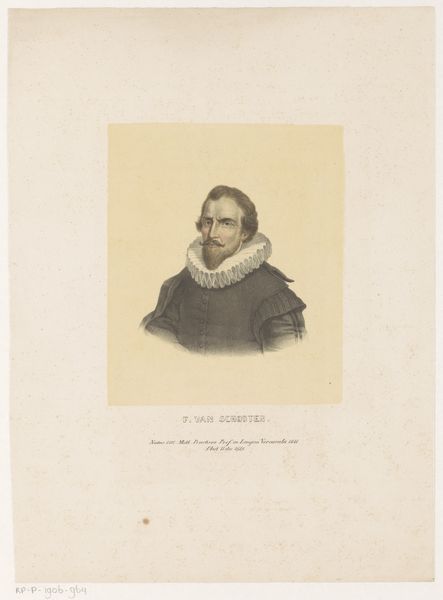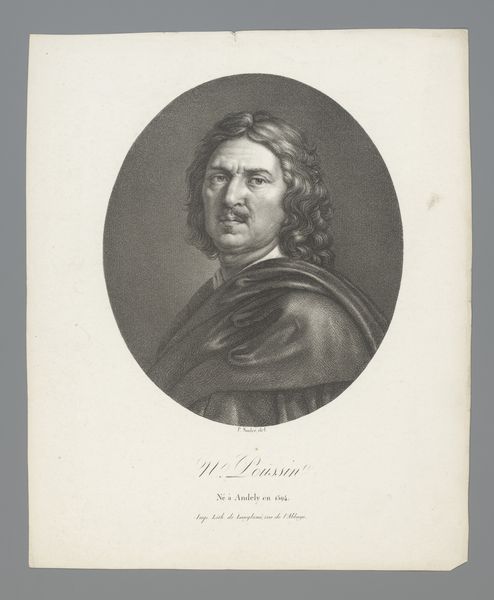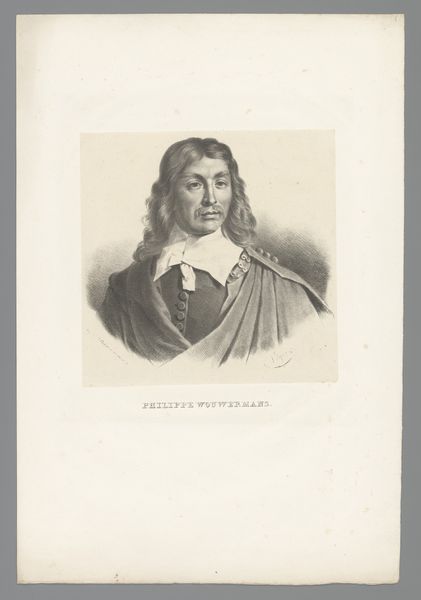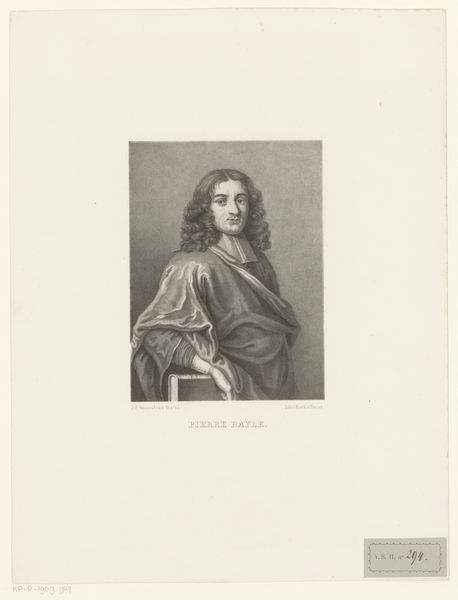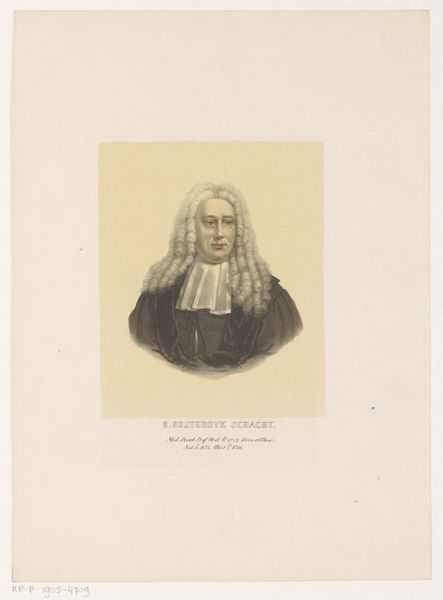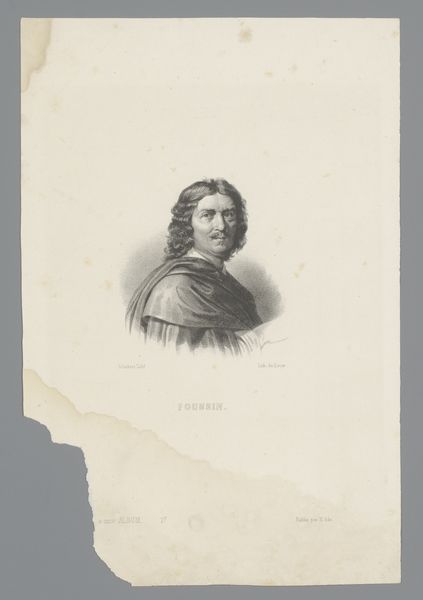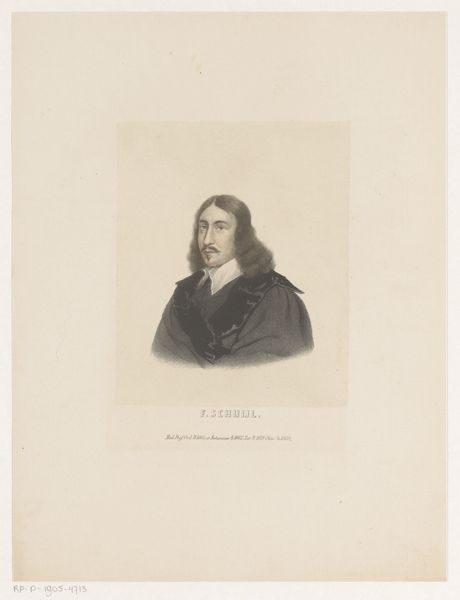
drawing, print, engraving
#
portrait
#
drawing
# print
#
pencil drawing
#
watercolour illustration
#
history-painting
#
engraving
#
realism
Dimensions: height 345 mm, width 260 mm
Copyright: Rijks Museum: Open Domain
Curator: This is a print entitled, "Portret van Adriaan Beeckerts van Thienen," dating back to around 1850, by Leendert (I) Springer. It appears to be an engraving or a finely rendered drawing of some sort. Editor: My first impression? Restrained. The grayscale palette and the subject's somber expression certainly contribute to that mood. The lines are precise, suggesting a focus on detail. It has this air of formal representation, almost like an official record. Curator: Indeed. Portraiture like this often served specific functions within society. The sitter’s attire and pose signaled his status and affiliations. Note how his clothing denotes wealth, and his bearing reflects a certain decorum suitable for public life. We have to remember how deeply connected visual representation was to power structures during that time. Editor: Absolutely. I wonder, too, about the role of institutions and collections here. Consider who commissions such portraits and why. What narratives are being validated or, perhaps, obscured? There’s also the question of the artist’s subjectivity – what biases might be embedded in this representation? Curator: An interesting point. We know, from archival sources, that Springer's portraits were quite sought after and they tended to perpetuate certain class ideals, emphasizing individual achievement within the existing order. The circulation of these images solidified this individual’s role within the public eye. Editor: So, in essence, it’s a complex negotiation. This artwork gives us an opportunity to look into the politics of image-making and its function to enforce norms around masculinity, class and representation. Curator: Precisely. As we examine how institutions propagated these portraits and collected them, we can discern broader patterns of how historical narratives were shaped. It gives this work far greater significance. Editor: It prompts questions about how we confront inherited values. Appreciating that critical dimension can bring these images into current dialogue and reflection. Curator: Indeed, and from these kinds of prints, one can observe historical notions and how imagery was so critical for disseminating very particular ideas in public culture. Editor: These questions remind us of the ongoing importance of interpreting works such as this one not simply for what we see but the stories they don’t readily tell us.
Comments
No comments
Be the first to comment and join the conversation on the ultimate creative platform.
